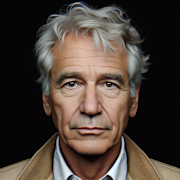Cinematic Evolution: The Transition from Silent Films to 'Talkies'

The era of silent films in the early days of cinema was a revolutionary period in the history of filmmaking. However, this era eventually gave way to the rise of “talkies,” or films with synchronized sound. This transition marked a significant turning point in the evolution of cinema, forever changing the way movies were made and experienced. In this blog post, we will explore the journey from silent films to talkies and examine the technological advancements and creative innovations that shaped this transition.
The Rise of Silent Films
Silent films dominated the early days of cinema, with filmmakers relying on visual storytelling techniques to convey emotions, narratives, and character development without the use of dialogue. Silent films were often accompanied by live music, sound effects, and intertitles to provide context and enhance the viewing experience. Despite the absence of spoken words, silent films were able to captivate audiences and explore a wide range of genres, from comedy and drama to adventure and romance.
One of the most iconic figures of the silent film era was Charlie Chaplin, whose physical comedy and expressive performance style resonated with audiences around the world. Chaplin’s films, such as “The Kid” and “City Lights,” showcased the power of visual storytelling and solidified his status as a legendary filmmaker and actor. Silent film stars like Mary Pickford, Rudolph Valentino, and Buster Keaton also left their mark on cinema, captivating audiences with their screen presence and performances.
The Advent of Sound in Cinema
The transition from silent films to talkies was a gradual process that was fueled by technological advancements and the demand for more immersive viewing experiences. In 1927, the release of Warner Bros.’ “The Jazz Singer” marked a significant milestone in cinema history, as it featured synchronized dialogue sequences and musical performances. While “The Jazz Singer” was not the first film with synchronized sound, it played a pivotal role in popularizing the concept of talkies and signaling the end of the silent film era.
The introduction of sound technology posed a number of challenges for filmmakers, as it required new equipment, recording methods, and production techniques. Early sound films were often plagued by technical issues, such as poor audio quality and limited mobility for actors. Despite these challenges, Hollywood embraced the transition to talkies, ushering in a new era of filmmaking that would revolutionize the industry.
Impact on Filmmaking and Storytelling
The shift from silent films to talkies had a profound impact on the way movies were made and experienced. Filmmakers now had the ability to incorporate dialogue, music, and sound effects into their films, allowing for greater creativity and narrative complexity. The use of sound also enabled filmmakers to explore new storytelling techniques, such as voice-over narration, ambient noise, and synchronized music scores.
The transition to talkies also changed the landscape of Hollywood and the film industry as a whole. Many silent film stars struggled to make the leap to sound films, as their voices and accents did not always match audience expectations. Some actors, such as Charlie Chaplin, successfully made the transition to talkies, while others saw their careers decline as a result of the shift in filmmaking technology. Despite these challenges, the rise of talkies opened up new opportunities for actors, directors, and screenwriters to collaborate and experiment with new forms of cinematic expression.
Legacy of Silent Films and Talkies
While silent films have become a relic of cinema history, they continue to captivate audiences with their timeless charm and artistry. Filmmakers and cinephiles alike appreciate the visual storytelling techniques and innovative filmmaking practices that defined the silent film era. Silent films have also inspired modern filmmakers to explore new ways of storytelling and visual communication, with directors like Michel Hazanavicius paying homage to the silent film era in films like “The Artist.”
On the other hand, talkies have become the standard in modern filmmaking, with advancements in sound technology and digital filmmaking enhancing the viewing experience for audiences around the world. The transition from silent films to talkies paved the way for the evolution of cinema as we know it today, showcasing the dynamic nature of filmmaking and the enduring power of storytelling in all its forms.
In conclusion, the transition from silent films to talkies was a transformative period in the history of cinema, marking a shift in filmmaking technology and narrative techniques. While silent films and talkies each have their own unique strengths and artistic qualities, both have left an indelible mark on the world of cinema, shaping the way we create, experience, and appreciate films for generations to come.

Desmond van der Walt
Journalist
More From Classics Authority Movies

Movie
Taxi Driver (1976)

Movie
Roman Holiday (1953)

Movie
City Lights (1931)

Movie
Cinematic Landscapes: The Use of Nature in Classic Film Settings

Movie
Before Sunset (2004)

Movie
M (1931)





